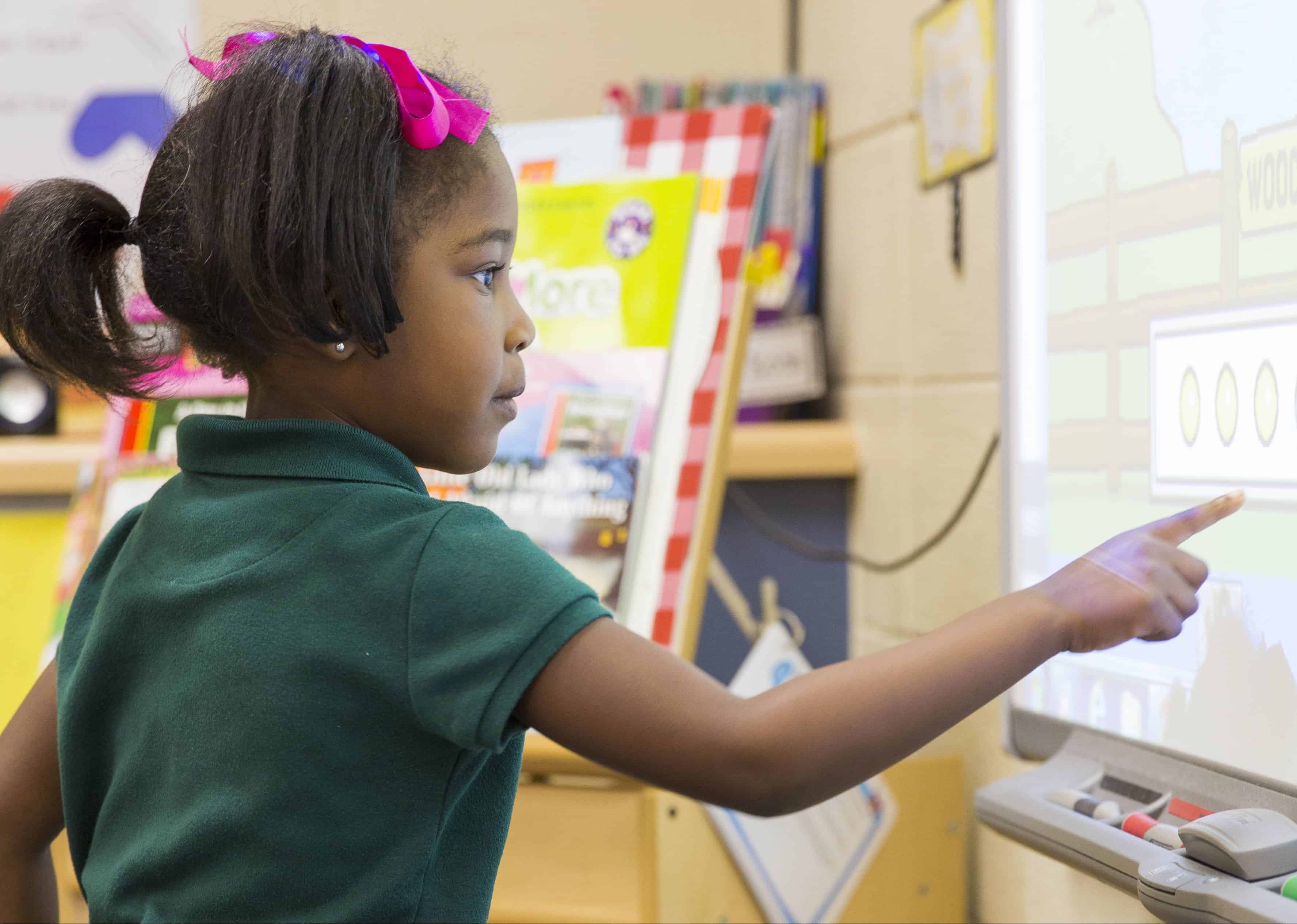To solve a problem they are struggling with, some students need only to “think outside the box.” This tactic is called divergent thinking, and it gets students to come up with several answers to a question and decide which is the best, most useful one.
Read on to take a look at divergent thinking, why it’s important, and how it differs from its opposite, convergent thinking. Then, discover a few strategies for helping students strengthen and maintain their divergent thinking skills.
What is Divergent Thinking?
 What do we mean by divergent thinking, and how does it differ from other problem-solving strategies? Divergent thinking is defined here as a learning strategy that encourages students to come up with many different solutions to a problem.[9] Once students think of a variety of answers, they then determine which answer best fits the question or prompt.
What do we mean by divergent thinking, and how does it differ from other problem-solving strategies? Divergent thinking is defined here as a learning strategy that encourages students to come up with many different solutions to a problem.[9] Once students think of a variety of answers, they then determine which answer best fits the question or prompt.
Although divergent thinking is not synonymous with creativity—here defined as the ability to have new ideas or make something new—the two skills are closely related.[3] Divergent thinking can lead to creativity as students come up with more unique solutions. Likewise, encouraging creativity in your students can lead them to consider divergent answers to their problems.
Studies also suggest that, as a whole, children have stronger divergent thinking skills than adults. For example, children are better at visualizing divergent ideas than adults. In fact, a person’s ability to think divergently decreases with age. It could be argued that teaching divergent thinking to students is less about teaching a new skill and more about maintaining it.
Divergent Thinking vs. Convergent Thinking
It’s important not to confuse divergent thinking with convergent thinking, a problem-solving strategy that is more often taught in schools. Convergent thinking encourages students to come up with one distinct answer to a question based on the information given to them.[6] After they have come up with this solution, they stop and do not come up with others.
Convergent thinking is not necessarily a negative thinking strategy. In some situations, there may be one answer to a question (though there likely isn’t only one way to get that answer). But in general, teaching divergent thinking over its convergent counterpart will help students solve problems more creatively and effectively.
Divergent Thinking Boosts Problem-Solving and Student Success
 What are the benefits of teaching students divergent thinking skills? As mentioned earlier, divergent thinking is strongly linked to creativity.[1] And according to neuroscience, creative thinking helps our brains learn new concepts by creating stronger neural connections.[17] By boosting creativity and divergent thinking in your students, they will be better equipped to reach their academic potential.
What are the benefits of teaching students divergent thinking skills? As mentioned earlier, divergent thinking is strongly linked to creativity.[1] And according to neuroscience, creative thinking helps our brains learn new concepts by creating stronger neural connections.[17] By boosting creativity and divergent thinking in your students, they will be better equipped to reach their academic potential.
Divergent thinking can also help students become more open-minded, a crucial social-emotional skill.[4] As students learn to think about a topic from new angles, they’ll be able to consider ideas from beyond their own experiences. This can help them broaden their perspective and better understand people whose ideas differ from their own.
Additionally, divergent thinking strategies teach students how to problem solve.[2] Instead of stopping at the quickest, easiest, or most obvious solution, students spend time thinking of many different answers. That way, they learn to prioritize finding an effective solution over a fast one.
The younger a student is, the easier divergent thinking may come to them. For example, 90% of kindergarteners ranked at the “genius” level for divergent thinking in a study conducted by the Royal Society of Medicine.[14] If you can nurture this skill early in a student’s academic journey, you can help them maintain skills that will benefit them for their entire life.
Strategies to Encourage Divergent Thought in Schools
One simple yet effective way to help students think divergently is by asking open-ended questions.[12] Open-ended questions are defined as ones that cannot be answered by “yes” or “no.” The more open a question is, the more likely students will be able to come up with many different answers.
These open-ended question examples from the Coeur d’Alene Public School District can help you get started as you structure your lesson plans:
- What were the major effects of World War II for the United States?
- What is your favorite memory from childhood?
- What makes the leaves change color?
In class, encourage students to focus more on the learning process, and not on the answer.[16] If students worry too much about finding the “right” answer, they may hurry and choose their first answer. But if they spend a little more time on a question, they may think of a better one.
Additionally, teach your students to view failures as a positive rather than a negative experience.[10] Making mistakes provides learning experiences that can help students move toward a more successful solution. If a student is struggling with a project, praise them for working hard and encourage them to try again from another angle.
And finally, make sure to include time for creative play in your classroom. Studies show that playing pretend, for example, is linked to stronger divergent thinking skills in young students.[5] Assign students projects that allow them to use their imagination and play as they complete it. You could, for example, assign students an art project or have them perform a skit in small groups.
5 Quick Tips to Teach Students Divergent Thinking Skills
It’s crucial to encourage divergent thinking in schools in order to help students thrive. By thinking outside of the box, your students will come up with better and more thoughtful solutions.
These five quick and simple tips will help you move towards divergent thinking in the classroom.
1. Journaling is a great way to encourage self-analysis and help students think through many solutions to a question.[13] Assign students to keep a journal and ask them thought-provoking questions.
For earlier grades, journaling may involve more drawing and early attempts to write than full sentences.
2. Include free play in your curriculum, which is when students can work on projects of their own choosing.[11]
3. Ask students open-ended questions that cannot be answered with one solution.[8] You could, for example, ask what they believe makes life meaningful or how they would solve a global issue.
4. Brainstorming is a great example of a divergent thinking strategy. If a student is stuck on an assignment, encourage them to brainstorm answers or solutions—either on their own or with their classmates. Through brainstorming, students are taught to consider a variety of solutions instead of just one.[6]
5. Play this Animal Soup Activity to teach students how to come up with many outcomes to a situation.
Sources:
- Runco, M.A., and Acar, S. Divergent Thinking as an Indicator of Creative Potential. Creativity Research Journal, 2012, 24(1), pp. 66-75.
- Vincent, A.S., Decker, B.P., and Mumford, M.D. Divergent Thinking, Intelligence, and Expertise: A Test of Alternative Models. Creativity Research Journal, 2002, 14(2), pp. 163-178.
- Runco, M. A. Commentary: Divergent thinking is not synonymous with creativity. Psychology of Aesthetics, Creativity, and the Arts, 2008, 2(2), 93–96.
- Goodman, S. Fuel Creativity in the Classroom With Divergent Thinking. March 2014. Edutopia. https://www.edutopia.org/blog/fueling-creativity-through-divergent-thinking-classroom-stacey-goodman
- Hadani, H.S. The Creativity Issue: Why Imaginative Play in Early Childhood Could be the Key to Creativity in Adulthood. Toca Magazine. tocaboca.com/magazine/creativity-issue_imaginary-play/.
- Nelson-Danley, K. How to Teach Divergent Thinking. Teach Hub. July 2020. https://www.teachhub.com/teaching-strategies/2020/07/how-to-teach-divergent-thinking/
- Palmiero, M., Di Giacomo, D., and Passafiume, D. Divergent Thinking and Age-Related Changes. Creativity Research Journal, 2014, 26(4), pp 456-460.
- Amico, B. Crucial Creativity: The Case for Cultivating Divergent Thinking in Classrooms. Waldorf Education. February 2020. https://www.waldorfeducation.org/news-resources/essentials-in-education-blog/detail/~board/essentials-in-ed-board/post/crucial-creativity-the-case-for-cultivating-divergent-thinking-in-classrooms.
- Guido, M. How to Teach Convergent and Divergent Thinking: Definitions, Examples, Templates and More. Prodigy. July 2018. https://www.prodigygame.com/main-en/blog/convergent-divergent-thinking/.
- Briggs, S. 30 Ways to Inspire Divergent Thinking. InformED. June 2014. https://www.opencolleges.edu.au/informed/features/divergent-thinking/.
- Iannelli, V. The Importance of Free Play for Kids. Verywell Family. March 2020. https://www.verywellfamily.com/the-importance-of-free-play-2633113.
- Hughes, D. Activities that Inspire Divergent Thinking. https://study.com/academy/lesson/activities-that-inspire-divergent-thinking.html.
- University of Washington Staff. Strategies of Divergent Thinking. https://faculty.washington.edu/ezent/imdt.htm.
- Abbasi, K. A riot of divergent thinking. Journal of the Royal Society of Medicine, October 2011, 104(10), pp. 391.
- Lewis, C., and Lovatt, P.J. Breaking away from set patterns of thinking: Improvisation and divergent thinking. Thinking Skills and Creativity, August 2013, 9, pp. 46-58.
- O’Byrne, W.I. Understanding key differences between divergent & convergent thinking. November 2017. https://wiobyrne.com/divergent-convergent/.
- Cohut, M. What are the health benefits of being creative? Medical News Today. February 2018. https://www.medicalnewstoday.com/articles/320947.

